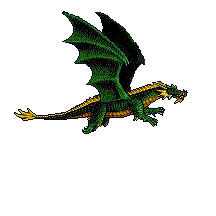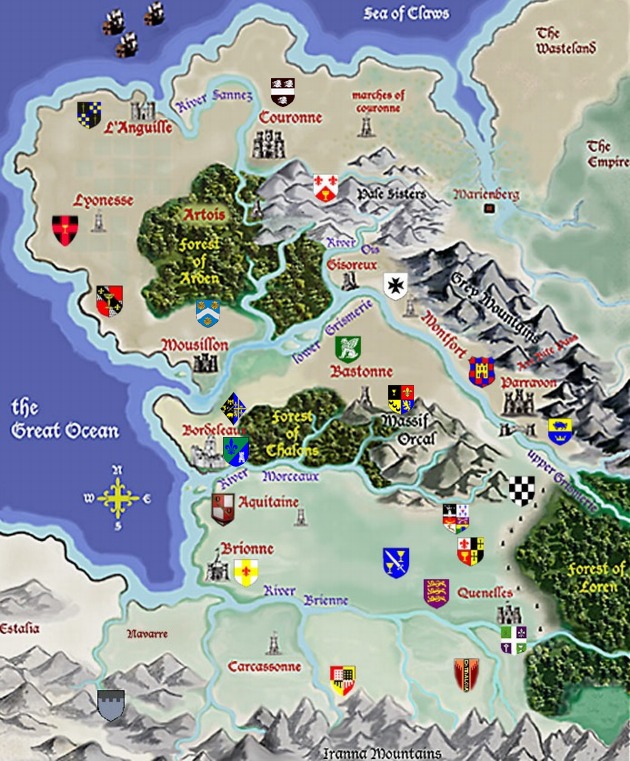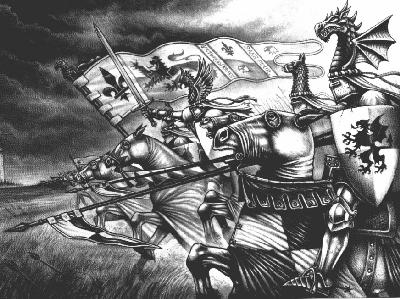


The Bretonnian Kingdom


-1500 The High Elves abandon the Old World after their war with the Dwarves and return to Ulthuan, leaving the settlement of Athel Loren behind.
-1000 Human Tribes settle the lands of Bretonnia. The greatest tribe, the Bretonni dominate the land
- 500 The southern parts of Bretonnia are absorbed into the Ishkar Empire, most of the Tribes of Bretonnia retreat into the mountains and the wilderness and resist the invaders.
-15 Adare leads a great rebelion against the Ishkar and breaks their power.
0 the Empire is founded, Adare crowns himself as the first emperor, several Tribes of Bretonnia ally with Adare to fight the Ishkar.
10 The Tribes of Bretonnia join the empire in order to continue the war over the sea against the Ishkar.
25 Victory over the Ishkar, the Golden Age of the Adarian Empire begins.
473 The Adarian Emperor Adare the XXXIII and the crown prince are assinated. The prince is blamed, but manages to flee and goes into hiding. Civil war breaks out.
475 Imperial garrision troops are recalled, and many Bretonnian Tribes send warriors go join the confused fighting.
500 An fleet of Undead from the lands of Settra lands at the coasts of Bretonnia and invades the lands. The land suffers long from the attacks of Undead.
577 Great incursion of Greenskins from the Grey Mountains. The Orc Warlords demand tribute from the Bretonni tribes but the human chieftains prefer to fight for their freedom. The expected support from the empire doesn't come. For the next 400 years the Bretonni fight against the Orcs.
630 The Norse clans start crossing the Sea of Claws to raid the coasts of Bretonnia
700-900 Warriors of Bretonnia battle against the Elves of Athel Loren over border disputes.
977 After a vision of a lady paladin of unearthly beauty that predicts the founding of a kingdom, the Bretonni duke Giles le Breton unites the chieftains of the Bretonni tribes under a banner blessed by the "Lady of the Paladins" and fights back the Greenskin plague. Gilles le Breton commands the tribesmen and fights the Orcs in the first of 12 major great battles. He establishes the idea of a chivalric knighthood and cares deeply for the land of Bretonnia. The cult of the "Lady of the Lake" becomes the most important religion in Bretonnia due to Giles' support.
1001 After the death of Giles le Breton, his son, Louis the Rash is crowned as the first king of Bretonnia
1005 Louis the Rash signs concord with the King and Queen of the Wood Elves acknowledging their separate Realm of Athel Loren
1110 Devastating Outbreak of the Black Plague in the Empire. During the next five years the Plague spreads throughout the Old World and Bretonnia is not spared.
1142 Another invasion of Orcs is defeated under the command of King Guillaume (Battle of Amandur). King Guillaume drives the Orcs from Bretonnia.
1240 The Corsairs of Arabia start their raids in the Southern Old World. The Tilean Island Sartosa becomes base for the Arabian raiders.
1245 King Boudoin slays the legendary Dragon Mergaste.
1425 To avoid a bloody war over her, la Damoiselle d'Artois, sole heiress of the lands of Tilea, announces that she will wed the champion of the Tournament of Ravola. One hundred Knights jousted for her hand. The Elite of the Bretonnian Knighthood, as well as worthy knights from across the empire and Estalia were defeated by Tilean Knights. The Bretonnians renounce their claims on the lands of Tilea.
1448 An alliance between Bretonnia, Tilea and the Empire is formed to drive the Arabians out of Estalia. Louis the Righteous, 15th king of Bretonnia, initiates the Crusades by sending an army to Araby.
1449 The Crusade begins. Sultan Jaffar invades Estalia and conquers Magritta. By the end of the year, the Bretonnians, Estalians, Tilean, and Empire forces been driven back into Estalia.
1450 The Notorious Red Duke of Aquitaine raises an army of undead but is defeated
1451 Sultan Jaffar is overthrown by the crusaders in the Battle of El Haikik
1452 A mighty host of Bretonnian Knights goes forth to Araby by land. The crusaders only reach as far as Blood River as they are slowed down by the massive attacks from Orks and Goblins from the Dark Lands. Some of the Crusaders decide to settle the land and found the Border Princes.
1588 At the Tournament of Guyenne King Jules jousts with a mysterious Elf Knight and is victorious.
1597 Marienburg seized by Bretonnian army under the Duc de L'Anguille. Five ear occupation ends when an army under the command of the Grand Duke of Middenland approaches the city.
1635 Battle of Castellet. Raiders from beyond the sea (Noresmen) attack L'Anguille and are beaten by King Philippe the Strong and his massive army of Knights.
1715 The Orc hordes of Gorbag Ironfist are defeated by the Elector Count of Wissenland at the battle of Gruenburg. Fugitives of the Orc horde invade Bretonnia but are destroyed by Bretonnian Knights.
1786 The Red Pox is first brought to Bretonnia by Skaven of Clan Eshin
1813 The Red Pox ravages Bretonnia. The foul Skaven launch attacks on Brionne and Quenelles. The Duke of Parravon strikes an alliance with the Elves of Athel Loren and marches against the Skaven. It is the greatest slaughter of Skaven in Bretonnian history.
1839 Birth of Genevieve Sandrine du Pointe du Lac Dieudonne.
1847 Bretonnian Fleet invades Lustria
1851 An army under the command of the great Enchanter Drachenfels sacks the city of Parravon.
1952 Norse raids of Bretonnian coast decrease when the Duke of L'Anguille allows the Norse Chieftain Skajad the Bastard to land in the Armorica region.
1999 A twin-tailed Comet falls from the sky and destroys the city of Mordheim. Knights from the north of Bretonnia set off to the city of the Damned to find fame and glory within the ruins.
2006 Chaos army invades Bretonnia and lays siege to Couronne. King Louis the Brave is Slain before the gates of the City
2007 The Battle of Couronne. Repanse de Lyonesse drives a huge Chaos Army from their siege of Couronne.
2201 King Louen Orc-Slayer declares an Errantry War to rid Bretonnia of Orcs. Much land is reclaimed and freed of the greenskin menace.
2232 Alliance of Estalian Princes invades and conquers southern Bretonnia.
2260 Around this time Thibault hunted for his brother Girauld in Bretonnia.
2267 Dukes of Bretonnia send an army of knights to drive out the Estalian Invaders.
2274 Siege of Brionne ends with the ousting of the last Estalian invaders.
2291 King Jules the Just is slain in single combat against a Chaos Knight
2297 Affair of the False Grail. Duke Maldred of Mousillon is dishonored. War is declared on the traitor Maldred.
2299 Gaston de Beau Geste marries La Belle Isoulde and is crowned King of Bretonnia
2300 The Red Pox strikes in Mousillon, all the peasants of Mousillon and many nobles perish. Maldred dies under mysterious circumstances. Mousillon ceases to exist as a Ducdom.
2301 Great War of Chaos Begins
2302 Magnus the pious asks Bretonnia for assistance against the armies of Chaos. Most knights are unable to even reply as they are beset in their own lands. Some knights do make the journey to the Empire and join with the alliance of Dwarves and Men who eventually defeat the Chaos hordes.
2320 Skaven raids beset the port cities of Bretonnia. The king orders the construction of a great fleet to counter the threat. Brionne begins to be known as the "city of thieves".
2419 Louis X dies. Charles, later known as L'Enorme, is crown prince of Bretonnia, being too young to rule, his mother Queen Louise becomes regent and moves the Capital to the prosperous town of Gisoreux.
2428 Charles I crowned king. Inspired, by his mother's idea, to rid the entire world of greenskins, King Charles renews the Errantry Wars and sends a host of Knights to the Border Princes to slaughter Orks and Greenskins beside the Blood River.
2429 Marienburg declares the independence of the Wasteland from the Empire and starts a never-ending quarrel between Bretonnia and the Empire who are both interested in conquering the city.
2450 The town of Mousillon is beset with a devastating series of earthquakes.
2468 Charles L'Enorme becomes ill and his son Charles II becomes acting ruler. His first act is to violently suppress civil unrest in Gisoreux.
2471 Charles II is crowned King of all Bretonnia. Being a decadent Despot, the land suffers under his rule. The peasants suffer greatly as nobles follow the example of their ruler and knighthood ceases to represent chivalry and justice, instead becoming an excuse to take advantage of the lesser classes.
2485 Peasants of Gisoreux are incited to riot by the growing merchant class who seek freedom from feudal rule.
2486 Charles the second is assassinated. Philippe V takes the crown of Bretonnia under much contention of his right to rule.
2488 Philippe V declares an end to the Errantry Wars after a great force of Bretonnian Knights ride forth into the Death Pass and never return.
2491 Battle of La Maisontall. The Monastery of La Maisontaal is swarmed by Undead commanded by the Necromancer Heinrich Kemmler. Parravon is attacked. Duc Tancred de Quenelles repels the Undead Hordes.
2495 Heinrich Kemmler again attempts to invade Bretonnia through the forest of Athel Loren. His forces are destroyed by the wood elves, but Kemmler escapes.
2500 After the Death of King Philippe his nephew Leon is crowned and renames himself Louen "Leoncour". Unlike his father, and uncle, the young king remembers the virtues of Knighthood and tries to reestablish the relevancy of the feudal system.
2500 Louen Leoncoeur is crowned King of Bretonnia.
A Knight may only fight hand-to-hand, he may not use a missile weapon.
A Knight shall always accept a challenge to personal combat.
A Bretonnian Knight shall not draw sword against a fellow Bretonnian Knight except in a trial by combat or in a tournament.
A knight shall accept the surrender of a knightly or honorable foe if that foe yeild to him.
A knight shall always keep his word of honor.
A knight shall always conduct himself in a gentemanly manner



